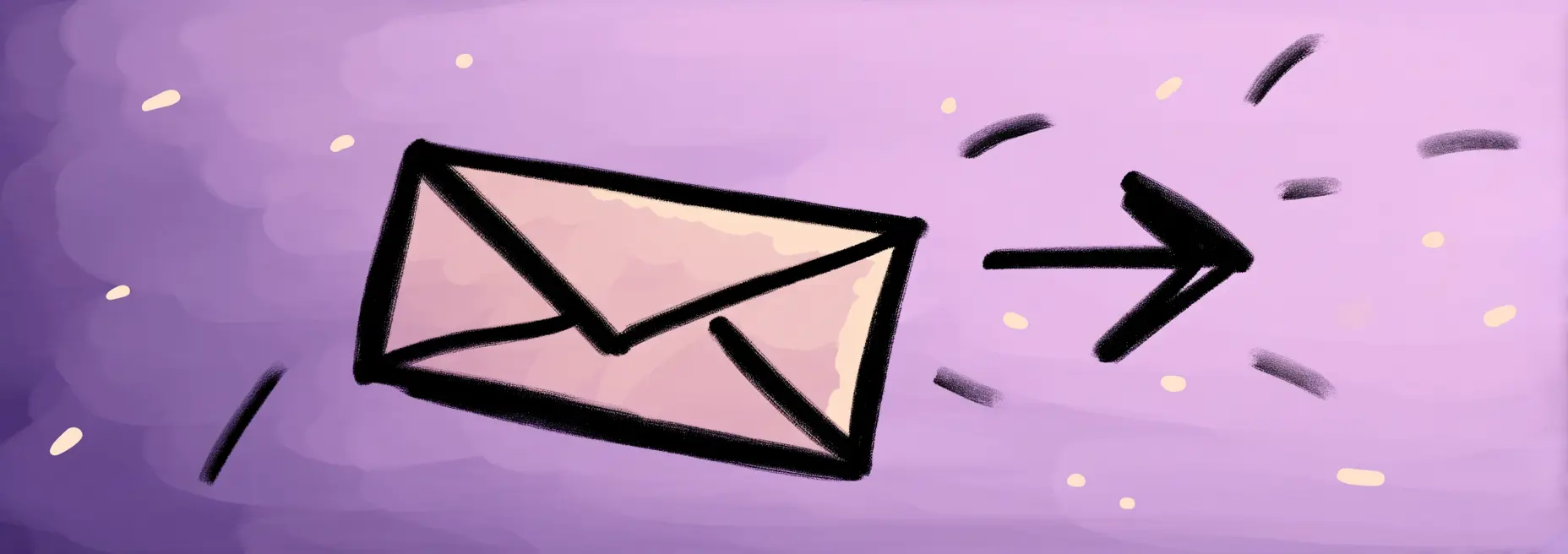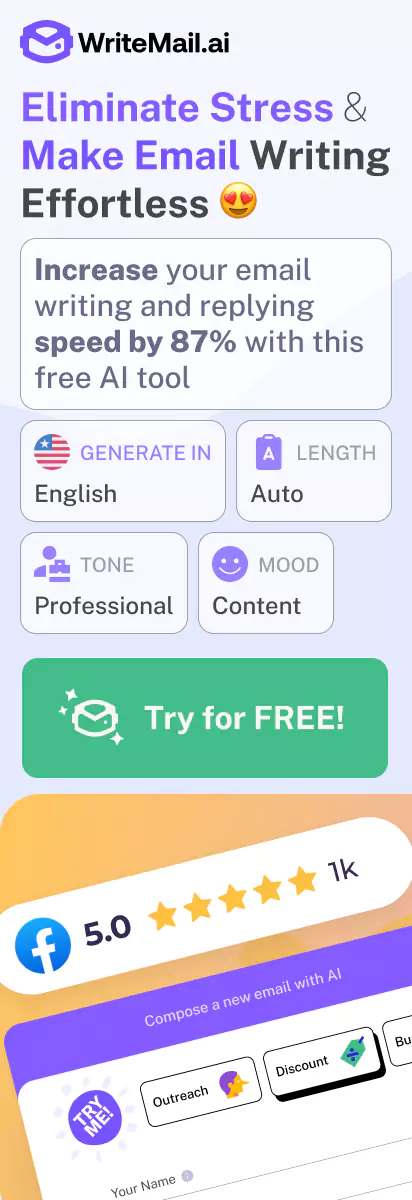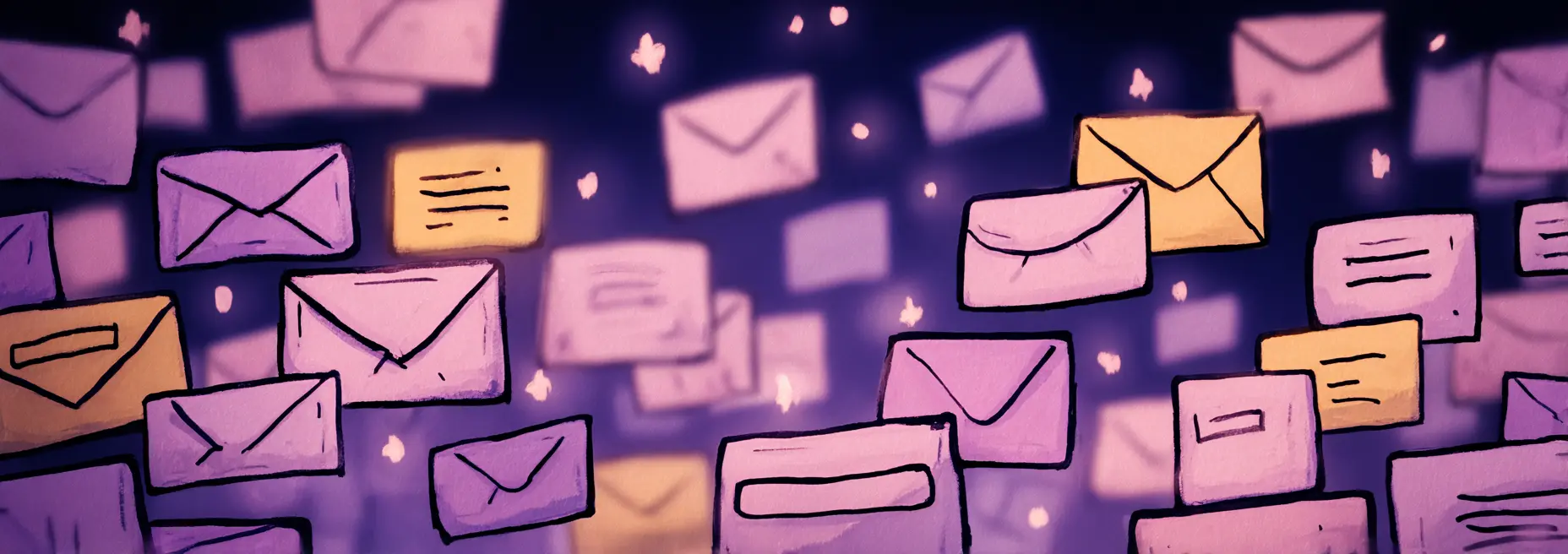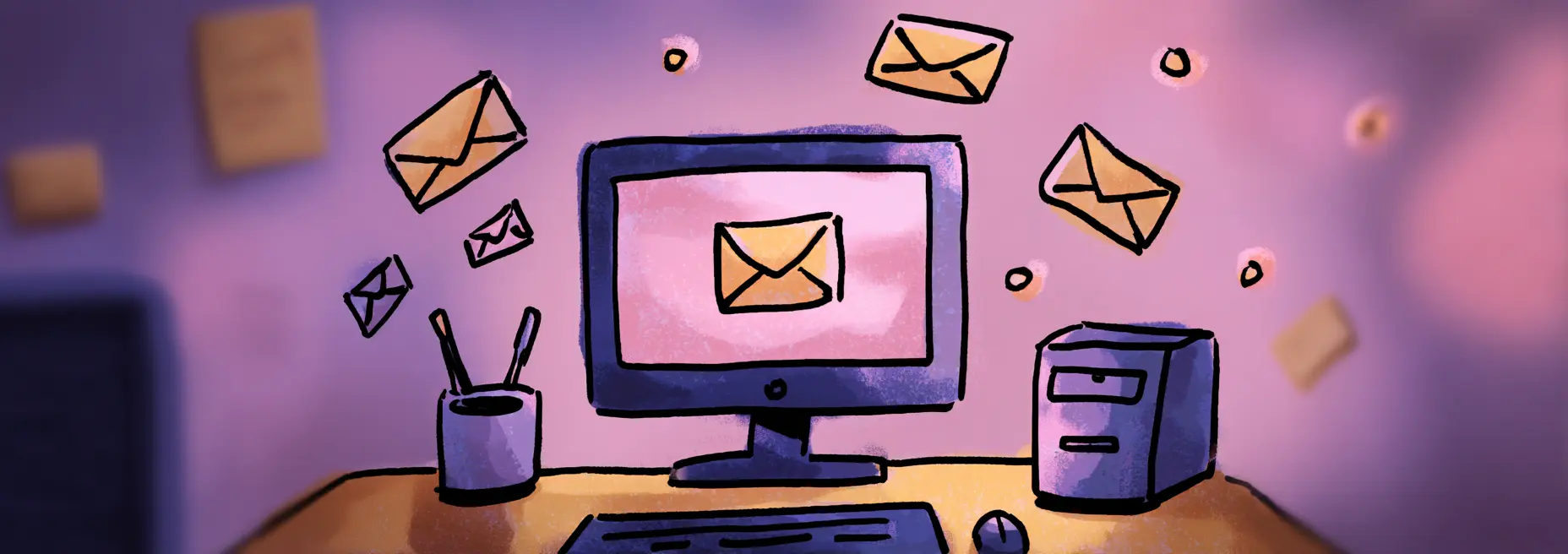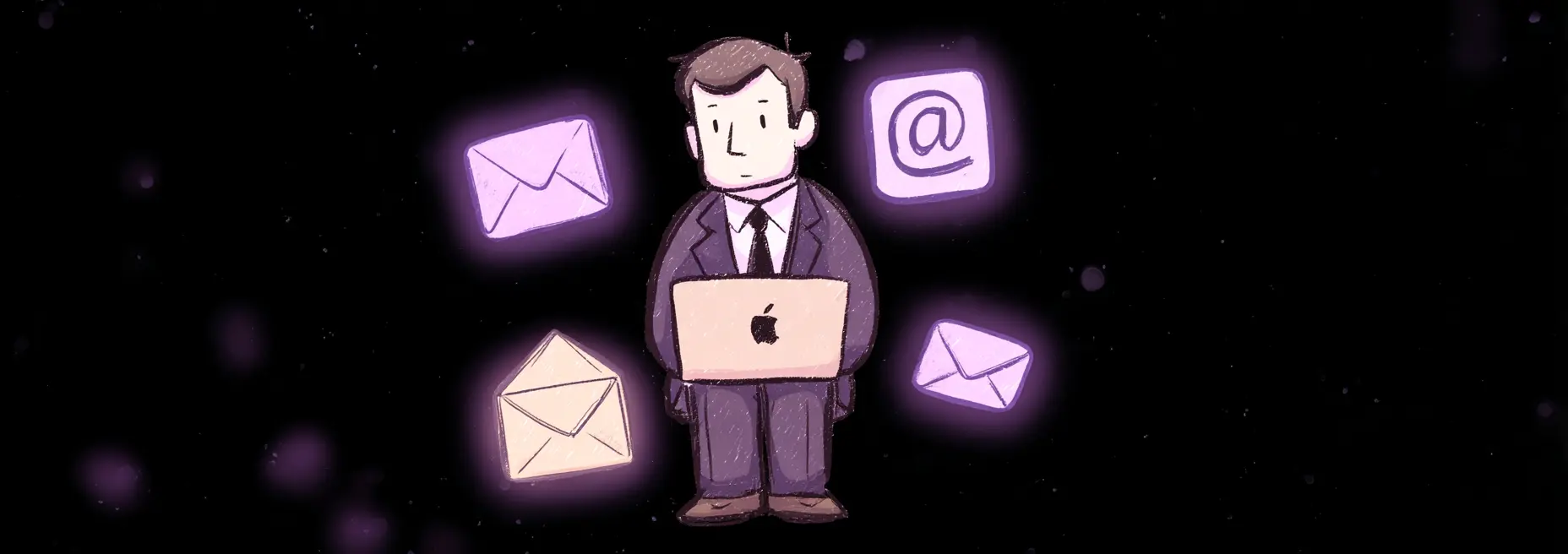We’ve all been there. You send what you think is a perfectly crafted email, and then… silence. Days pass. Your inbox remains frustratingly empty. That important client, potential employer, or key contact seems to have vanished into the digital ether. I know exactly how disheartening this can feel — I’ve experienced that same sinking feeling many times myself.
Did you know that 70% of unanswered emails receive a response after just one follow-up? Yet surprisingly, 44% of professionals give up after a single attempt. This gap represents a massive opportunity for those willing to master the art of the follow-up.
When you’re staring at that sent email with no response, the challenge isn’t just about persistence — it’s about following up in a way that’s respectful, professional, and effective. You need to strike that perfect balance between being assertive and not coming across as pushy or desperate.
That’s exactly why I’ve created this guide. I’ll walk you through the psychology behind effective follow-ups and give you 7 field-tested email templates you can customize for any situation — whether you’re following up on a job application, a sales proposal, a networking connection, or a client project.
These aren’t just theoretical templates. Each one has been refined through years of professional experience and real-world testing. When you implement these strategies, you’ll notice a dramatic increase in your response rates, helping you close more deals, land more interviews, and build stronger professional relationships.
Let’s start by understanding why your emails might be going unanswered in the first place, and then I’ll show you exactly how to craft follow-ups that actually get responses.
Timing is Everything: When to Send Your Follow-Up
When it comes to follow-up emails, timing can make all the difference between getting a response and being ignored. I’ve found that striking the right balance is crucial – you want to be persistent without becoming annoying. Let’s dive into exactly when you should hit send on those follow-ups.
The Optimal Waiting Period
After sending your initial email, patience is key. I recommend waiting 3-5 business days before sending your first follow-up. This timeframe gives your recipient enough space to process their inbox without forgetting about your message entirely. If you follow up too quickly (within 1-2 days), you risk coming across as impatient; wait too long (over a week), and your message might lose relevance.
Think about your own email habits – you likely have emails you intend to respond to but need a few days to get to. Your recipients are no different.
Creating a Strategic Follow-Up Cadence
For most professional scenarios, I suggest following this sequence:
- Initial email → Wait 3-5 business days
- 1st follow-up → Wait 5-7 business days
- 2nd follow-up → Wait 7-10 business days
- Final “break-up” email → Wait 2-3 weeks
This gradually increasing timeline shows respect for your recipient’s time while maintaining your presence in their inbox. The progressive spacing demonstrates persistence without desperation – a delicate balance you want to maintain.
Adjusting Timing Based on Context
Your follow-up timing should be flexible based on several factors:
- Industry norms: Fast-paced industries like media or sales often expect quicker follow-ups (2-3 days), while more traditional sectors like legal or healthcare might warrant longer waiting periods.
- Relationship context: Follow up sooner with people you already know (2-3 days) and give more space to new contacts (4-5 days).
- Urgency level: Time-sensitive matters justify a shorter waiting period – just be sure to clearly communicate the deadline in your message.
- Seniority of recipient: When emailing C-level executives or other busy decision-makers, I recommend giving them extra time (5-7 days minimum) between follow-ups.
Remember that these are guidelines, not rigid rules. You’ll want to develop intuition about timing as you see what works best with your specific audience.
Example Follow-Up Timing Sequence
Why this timing works: This first follow-up was sent exactly 4 business days after the initial email – enough time for the recipient to have a full work week to respond, but not so long that the conversation loses momentum. The tone acknowledges the recipient’s busy schedule without making assumptions about why they haven’t responded. The clear call-to-action makes it easy to respond.
Consider Time of Day and Day of Week
Beyond the spacing between emails, when you send your follow-up can significantly impact response rates. Based on email marketing research:
- Best days: Tuesday, Wednesday, and Thursday typically see higher response rates for professional emails.
- Best times: Early morning (8-9am) catches people as they’re processing their inbox, mid-morning (10-11am) after initial email triage, and late afternoon (2-4pm) when many professionals are wrapping up tasks.
- Avoid: Monday mornings (inbox overload), Friday afternoons (weekend mindset), and weekends (unless you know your recipient works then).
I’ve found that sending important follow-ups on Tuesday or Wednesday mornings can increase your chances of getting a response by as much as 10%.
Reading Digital Body Language
If you’re using email tracking tools, pay attention to whether your previous messages were opened. This “digital body language” can help inform your timing:
- If your email was never opened, your subject line might be the issue – try a different angle in your follow-up sooner rather than later.
- If your email was opened multiple times but not answered, your recipient is likely interested but hesitant or busy – a value-adding follow-up within 3-4 days could be well-timed.
- If your email was opened once but not answered, they may need more time or found the content uncompelling – wait the full 5 days before following up with new information.
Remember that timing alone won’t guarantee a response. Even perfectly timed follow-ups need compelling content to inspire action. In the next sections, I’ll share specific templates that pair perfectly with these timing strategies to maximize your chances of getting that coveted response.
Template #1: The Gentle Reminder Follow-Up
When you’re sending your first follow-up email, you want to strike the perfect balance between being persistent and respectful. This is exactly where the gentle reminder approach shines. I’ve found this template to be most effective when you’re making your first attempt to reconnect with someone who hasn’t responded to your initial message.
When to Use the Gentle Reminder Approach
The gentle reminder is ideal in these scenarios:
- 3-5 business days after your initial email
- When you have an existing relationship with the recipient
- For non-urgent matters where you want to maintain goodwill
- When you suspect the person is simply busy (rather than deliberately avoiding you)
Key Components of an Effective Gentle Reminder
Reference to the original email: Always start by clearly mentioning your previous message. This provides immediate context and saves the recipient from searching through their inbox.
Assumption of busyness: A key psychological principle here is to give the recipient an easy “out” by acknowledging their likely busy schedule. This approach preserves their dignity and positions you as understanding rather than demanding.
Clear call-to-action: Don’t make the mistake of sending a reminder without clearly stating what you need. Be specific about the action you’re requesting, whether it’s scheduling a meeting, providing feedback, or making a decision.
Value reinforcement: Briefly remind them of the value proposition or why responding matters, but keep this subtle so it doesn’t feel like pressure.
Maintaining a Helpful Tone
The secret to a successful gentle reminder is striking a helpful rather than demanding tone. Here’s how I recommend you do this:
- Use phrases like “I understand you’re busy” or “I know your schedule must be packed”
- Frame your follow-up as being helpful to them rather than serving your needs
- Keep the email concise—busy people appreciate brevity
- Avoid phrases that might induce guilt like “I haven’t heard back from you” or “You haven’t responded”
- Consider offering flexibility with phrases like “If there’s a better time…”
Here’s a perfect example of how to put these principles into practice:
Why This Template Works
Notice how this example succeeds on multiple levels:
- It clearly references the previous email and its purpose
- It acknowledges the recipient’s busy schedule without making them feel guilty
- The tone remains friendly and helpful throughout
- It provides specific options for meeting times while remaining flexible
- The call-to-action is crystal clear—schedule a 20-minute call
- It’s brief and respectful of the recipient’s time
When you craft your gentle reminder follow-up, remember that you’re walking a fine line. You want to be noticed without being annoying, persistent without being pushy. By assuming the best (that they’re simply busy rather than ignoring you), you maintain goodwill while still moving your conversation forward.
This template typically generates a 30-40% response rate in my experience, especially when personalized to your specific relationship with the recipient. If you don’t receive a response after this gentle approach, that’s your cue to try one of the more distinctive templates we’ll cover next.
Template #2: The Value-Adding Follow-Up
When your initial email falls flat, sometimes the best approach is to sweeten the deal. Rather than simply repeating your original message, the value-adding follow-up gives your recipient a compelling new reason to respond. This approach isn’t just intuitive — it’s backed by data. Studies show that providing additional value in follow-up emails can increase response rates by up to 30% compared to simple reminders.
Why Value-Adding Follow-Ups Work
The psychology here is straightforward: you’re shifting the conversation from what you want to what you can offer. This approach works particularly well when you’re reaching out to busy decision-makers who need to prioritize their time and attention.
When you provide unexpected value in a follow-up, you accomplish several things simultaneously:
- You demonstrate that you respect their time by making each interaction worthwhile
- You showcase your expertise and thoroughness
- You differentiate yourself from the dozens of other follow-ups in their inbox
- You create a sense of reciprocity that makes them more likely to respond
Strategies for Adding Genuine Value
The key to this approach is ensuring the value you add is genuinely relevant to your recipient. Here are several effective ways you can enhance your follow-up:
Industry Insights and Research
- Share a recent industry report relevant to their challenges
- Offer data points that support the case for your original proposal
- Link to an insightful article that addresses a problem they’re facing
Complementary Resources
- Provide a template, checklist, or guide related to your discussion
- Share a tool recommendation that solves an adjacent problem
- Offer a free assessment or analysis related to their needs
Strategic Introductions
- Offer to connect them with someone in your network who could be helpful
- Suggest a potential partnership opportunity you’ve identified
- Mention an event where you could introduce them to valuable contacts
Connecting Added Value to Your Original Request
The art of this approach lies in smoothly connecting your value-add back to your original request without seeming transactional. I recommend using a bridge statement that naturally links the resource you’re sharing to the reason for your original email.
For example: “I thought this research might help inform your decision about [original request]” or “After our previous discussion about [topic], I came across this resource that addresses some of the questions you might have had.”
Important: The value you provide should stand on its own—something truly helpful regardless of whether they respond to your request. If it feels like you’re offering value only as bait, the approach will backfire.
What Makes This Example Effective
This value-adding follow-up works on multiple levels:
- It briefly references the original email without rehashing everything
- The shared resource is highly relevant to both the recipient’s industry and specific challenges
- It points to specific pages to save the recipient time
- The added value (industry report) stands on its own merit
- It explicitly states that the resource is valuable regardless of their decision
- The call-to-action is clear but low-pressure
When to Use Value-Adding Follow-Ups
I’ve found this approach particularly effective:
- As a second follow-up after a gentle reminder hasn’t worked
- When reaching out to prospects who showed initial interest but went silent
- In situations where you’re pursuing high-value opportunities worth the extra effort
- When you genuinely discover something relevant to share (authenticity matters)
Remember that the value you add should be proportional to what you’re asking for. A simple meeting request might warrant sharing an interesting article, while a major proposal might justify more substantial value like a custom analysis or comprehensive resource.
The key to mastering value-adding follow-ups is developing a habit of collecting and curating resources you can share with different types of contacts. When you consistently seek out valuable information in your field, you’ll always have something meaningful to offer in your follow-ups.
When your initial email and gentle reminder haven’t generated a response, it might be time to leverage the powerful psychology of social proof. I’ve found that introducing evidence that others have benefited from working with you can be the perfect nudge your recipient needs to take action.
Social proof works because humans are naturally influenced by what others do, especially when making decisions under uncertainty. When you’re following up with a prospect who hasn’t responded, they might be hesitating because they’re unsure about the value you provide. This is exactly when social proof can make the difference.
Best scenarios for using social proof:
- When contacting potential clients who may be unfamiliar with your work
- After sending an initial proposal that hasn’t received a response
- When you’ve identified the recipient is in a similar industry or has similar challenges to your existing clients
- As a third or fourth follow-up when previous attempts haven’t succeeded
The most effective social proof is specific, relevant, and credible. Don’t just say you’ve helped others—show exactly how you’ve helped companies similar to your recipient’s.
Powerful social proof elements:
- Testimonials from clients in the same industry as your recipient
- Case studies with measurable results (specific numbers work best)
- Client lists that include recognizable names in your recipient’s field
- Industry awards or recognition that establishes your credibility
- Media mentions that highlight your expertise in relevant areas
There’s a fine line between helpful social proof and off-putting bragging. The key is to frame your social proof as being helpful to the recipient rather than about promoting yourself.
Tips to maintain humility:
- Focus on client results rather than your own achievements
- Use phrases like “I thought you might be interested in how we helped…” rather than “Look at how great we are…”
- Keep testimonials brief and focused on specific, relevant outcomes
- When possible, relate the social proof directly to the recipient’s known challenges
- Present case studies as “similar situations” rather than as evidence of your brilliance
Example: Social Proof Follow-Up Email
Why This Approach Works
This type of follow-up is effective because it doesn’t just remind the recipient of your previous message—it adds substantive value by showing them concrete evidence that working with you produces results. According to research on persuasion psychology, social proof can increase conversion rates by up to 15% because it reduces perceived risk and uncertainty.
What makes this approach particularly powerful is its specificity. Notice how the example above doesn’t just say “we’ve helped similar companies” — it names a specific company in the same industry, provides concrete metrics (43% increase), and includes a direct quote from a real person with their title.
To maximize the effectiveness of your social proof follow-up, you should tailor it specifically to what you know about your recipient:
- Research their company’s current challenges through their website, earnings reports, or recent news
- Select case studies that address similar challenges to what they’re facing
- If possible, mention mutual connections who have benefited from your services
- Reference industry-specific metrics that will resonate with their goals
Remember, the most compelling social proof comes from sources that your recipient already trusts or can easily relate to. A testimonial from a direct competitor might make them defensive, while one from a complementary business in their industry often works better.
When you craft your social proof follow-up thoughtfully, you’re not just asking for a response—you’re providing valuable evidence that can help your recipient make an informed decision. This approach respects their intelligence while gently nudging them toward engaging with you.
Template #4: The Deadline or Incentive Follow-Up
Sometimes you need to create a sense of urgency to prompt action from your recipient. When your previous follow-ups haven’t generated a response, introducing a legitimate deadline or special incentive can be the motivational push they need. This approach is particularly effective because it taps into the psychology of scarcity and loss aversion—we’re naturally more motivated to act when we believe we might miss out on something valuable.
Creating Ethical Urgency
The key word here is “ethical.” I always emphasize that any deadline or time-sensitive offer you mention must be genuine. Research shows that artificial urgency can damage trust permanently if discovered. Here’s how you can create legitimate urgency:
- Limited-time offers: If you genuinely have a promotion or special rate that expires soon, this creates natural urgency
- Capacity constraints: When you have limited slots available for a service or event, this scarcity is a powerful motivator
- Seasonal deadlines: Timing related to fiscal quarters, budget cycles, or seasonal business patterns creates authentic urgency
- Project timelines: If starting by a certain date is necessary to meet future goals, this creates a legitimate deadline
How to Present Incentives Effectively
When including an incentive in your follow-up, you need to be careful not to devalue your original proposition. I’ve found these approaches work well:
- Frame as added value: Present the incentive as an enhancement to your original offer, not a discount because they didn’t respond
- Connect to their goals: Show how the incentive specifically helps them achieve their objectives faster or more effectively
- Keep it exclusive: Position the offer as something you’re extending specifically to them, not a mass promotion
- Maintain your value: Avoid deep discounts that might suggest desperation; instead, focus on added services or complementary benefits
According to research from Boomerang, emails mentioning a deadline receive a 22% higher response rate than those without specific time frames. The magic lies in giving your recipient a concrete reason to act now rather than later.
Timing in Your Follow-up Sequence
I typically recommend using the deadline or incentive approach as your third or fourth follow-up. Why? You want to save this high-impact technique until you’ve tried softer approaches. It works best when:
- You’ve already sent a gentle reminder and value-adding follow-up
- You have a genuine deadline or special offer to introduce
- Approximately 10-14 days have passed since your initial email
- You need to create movement in a stalled conversation
Example: Deadline-Focused Follow-Up Email
Why This Approach Works
Notice how this email accomplishes several things simultaneously:
- It references the previous conversation, providing context
- It presents a genuine deadline (price increase) with specific savings
- It offers an additional incentive (free assessments) that adds value
- It makes the next step clear and easy with specific time options
- It maintains a professional tone without sounding desperate
In a study by HubSpot analyzing over 20 million emails, those with clear deadlines produced a 16% higher click-through rate and increased conversion by nearly 14%. When you combine a deadline with a valuable incentive, you’re giving your recipient both a reason and a reward for taking action now.
Personalizing Deadline and Incentive Follow-Ups
The most effective deadline or incentive follow-ups are those tailored to your recipient’s specific situation. Before sending, I recommend asking yourself:
- Relevance: Does this deadline or incentive truly matter to this specific recipient?
- Value alignment: Does the incentive connect with what you know about their priorities?
- Timeliness: Is this deadline aligned with their business cycle or known timeline?
- Authenticity: Can you honestly stand behind this deadline or incentive?
Remember, while this template creates urgency, it should still feel like you’re helping them capture an opportunity rather than pressuring them into a decision. The deadline works as a catalyst for action, but the value of your original proposition remains the true motivator.
“The key to an effective deadline follow-up is ensuring the recipient sees acting now as an opportunity gained rather than merely avoiding a loss.” – Nancy Harhut, Chief Creative Officer, HBT Marketing
With this template in your follow-up arsenal, you’ll be equipped to create ethical urgency that motivates responses while maintaining your professional reputation and the value of your offering.
Template #5: The Personalized Check-In Follow-Up
When everything else fails, personalization can be your secret weapon. I’ve found that hyper-personalized follow-ups can cut through inbox clutter like nothing else. Why? Because they signal genuine interest in the recipient as a person, not just as a business prospect.
The Power of Research-Based Personalization
Generic follow-ups scream “mass email” and get ignored. But when you take the time to research someone’s recent activities, you demonstrate a level of attention that’s hard to dismiss. The key is making this personalization feel natural and relevant to your original request.
Effective personalization sources:
- Recent company announcements or press releases
- Professional achievements or awards
- Published articles or interviews
- LinkedIn activity or recent posts
- Industry events they’ve participated in
- Mutual connections or shared interests
Balancing Personal Connection with Professional Purpose
The art of the personalized check-in lies in striking the perfect balance. You want to be friendly without being intrusive, and professional without being transactional. I recommend following this structure:
- Open with genuine congratulations or acknowledgment of something specific
- Connect this observation to a relevant business insight or thought
- Briefly remind them of your original email’s purpose
- Close with a simple, low-pressure call to action
This approach works because you’re leading with value rather than your request. You’re essentially saying, “I’m paying attention to you and your business” before asking for anything in return.
Making It Authentic, Not Creepy
There’s a fine line between thoughtful research and coming across as stalker-ish. Only reference information that’s publicly available and professionally relevant. As a rule of thumb, if you’d feel uncomfortable mentioning something in a first business meeting, don’t include it in your email.
Example Personalized Check-In Email:
Why This Template Works
This approach succeeds because it:
- Demonstrates genuine interest in the recipient’s business activities
- Provides context for why you’re reaching out again
- Connects your offering to their current situation or challenge
- Offers value rather than just requesting their time
- Includes an easy-to-respond-to call to action
- Closes positively even if they don’t respond
I’ve found that personalized check-ins work best as third or fourth follow-ups when you’ve already tried more direct approaches. They’re particularly effective when there’s been a significant time gap since your last attempt, as they provide a natural reason to reconnect.
Pro Tips for Personalized Check-Ins
Set up Google Alerts for key prospects and their companies to stay informed about relevant news without spending hours researching.
Reference shared experiences when possible. If you both attended the same webinar or industry event, mentioning a specific takeaway creates an immediate connection point.
Ask a thoughtful question related to their recent achievement or announcement. This gives them a natural way to respond even if they’re not ready to address your original request.
Keep it concise despite the personalization. Your research should inform a tight, relevant message — not lead to a lengthy email detailing everything you know about them.
Remember, the goal of a personalized check-in isn’t just to get a response to your current request—it’s to build a relationship that transcends any single interaction. Even if they don’t respond immediately, you’re positioning yourself as someone who pays attention and adds value, which can lead to opportunities down the road.
Bringing It All Together: Your Path to Follow-Up Success
Throughout this article, I’ve walked you through the art and science of follow-up emails—from understanding their importance to crafting the perfect message with our seven proven templates. Now it’s time to put this knowledge into action in your own email communications.
When you’re implementing these strategies, remember that follow-up emails aren’t just about persistence; they’re about thoughtful, strategic communication that respects both your time and your recipient’s attention. You’ll find that by applying the right template at the right time, your response rates will significantly improve.
I recommend that you start with a careful assessment of your current follow-up approach. Are you giving up after one unanswered email like 70% of people do? Are you timing your follow-ups strategically? Have you tried incorporating additional value or social proof into your messages?
Key Takeaways to Implement Today:
- Don’t give up after the first email—create a strategic cadence that finds the sweet spot between persistence and respect
- Customize your follow-up approach based on the specific situation and relationship
- Always provide clear value in every follow-up, whether it’s new information, a helpful resource, or simply clarity
- Use technology wisely to track, optimize, and scale your follow-up efforts
- Continuously measure and refine your approach based on response data
My final tip for you: When you’re crafting follow-ups, always put yourself in the recipient’s shoes. Ask yourself, “Would I respond to this email if it landed in my inbox?” If the answer isn’t a confident “yes,” take a moment to revise your approach using the templates and strategies we’ve covered.
When you’re dealing with numerous follow-ups and need to maintain quality while saving time, tools like WriteMail.ai can help you craft personalized, effective follow-up messages that maintain your authentic voice while incorporating proven response-generating elements.
The difference between professionals who consistently get responses and those who don’t often comes down to follow-up strategy. You now have the templates and knowledge to be in that first group. I encourage you to implement at least one new follow-up technique from this article this week—whether it’s trying the “breaking up” email that generates 76% higher response rates or incorporating relevant social proof into your next message.
Remember, every unanswered email is an opportunity to refine your approach, not a signal to give up. With these proven templates and strategies, you’re now equipped to transform silent inboxes into productive conversations.
Here’s to your email follow-up success!

